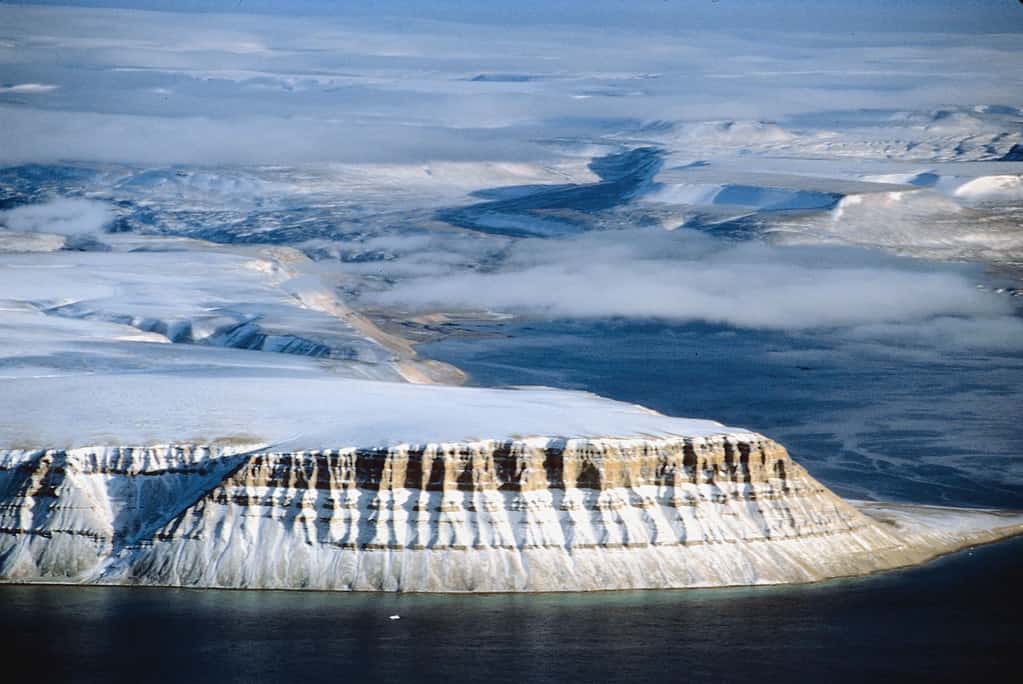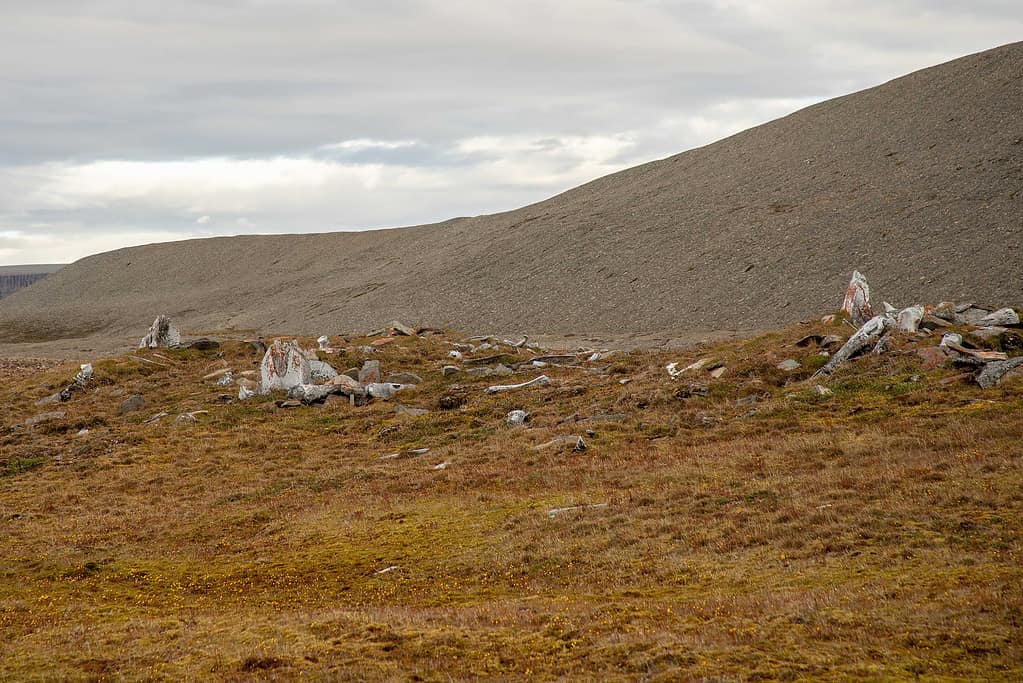Imagine an environment so desolate that astronauts train for trips to the Red Planet on its landscape. Canada’s Devon Island is the closest place on Earth to an extraterrestrial habitat. The rough terrain, extreme temperatures, and remoteness genuinely mimic a different world. Scientists utilize this barren land for research and NASA training, and eventually, Devon Island will be the final stop for astronauts before they depart for Mars. Learn more about Canada’s incredible Mars-like Devon Island, including its history, climate, and similarities to the Red Planet.
Where is Devon Island?

The landscape and climate of Devon Island is similar to that of Mars.
©karenfoleyphotography/iStock via Getty Images
Devon Island is impressive by anyone’s standards. It is the largest uninhabited island in the world, measuring 320 miles long, 100 miles wide, and encompassing a total area of 21,331 square miles. This vast and barren land is in Nunavut, Canada, in the Arctic Ocean. It is the largest of the Parry Islands, and you will find it west of Baffin Bay and south of Ellesmere Island. Devon Island sits within the Qikiqtaaluk Region, where it is one of the most immense land masses of the Arctic Archipelago.
Devon Island’s History
While the Inuit have occupied parts of Devon Island for centuries, the Europeans first discovered its existence in 1616. Robert Bylot and William Baffin, English Arctic explorers, were the first to lay their eyes on the vast island. From 1819 to 1820, a Royal Navy officer, William Edward Parry, charted the island’s south coast and named it North Devon. Eventually, the name changed to Devon Island in the late 1800s.
There are a few structural remains on the island from Dundas Harbour, an outpost established in 1924, which was uninhabited and then reinhabited several times until 1951. Dozens of Baffin Island Inuit families once occupied the island. Still, the collapse of the fur trade and the harsh environment led to their dispersal and abandonment in 1936.
The Climate and Geography of Devon Island

The island is nutrient deficient. Very little plant and animal life thrive in its harsh environment.
©© Getty Images/PHOTOS.com>> via Getty Images
Devon Island sits at a high elevation at an extreme northern latitude. Its desolate landscape is primarily covered in rocks, small mountain ranges, and a significant ice cap. And its frost-shattered stones are old, dating back to the Precambrian, Cambrian, and Ordovician eras.
The most diverse area of the island is the Truelove Lowland, where vegetation grows, and wildlife exists. Due to blocked drainage, increased precipitation, and warmer summer temperatures, the lowlands contain moss tundra and grazing muskoxen year-round.
Devon Island is largely nutrient deficient, meaning plant and animal life is scarce across most of its landscape. The temperatures rarely exceed 50 degrees Fahrenheit and can fall as low as -58 degrees. The island also has a very short growing season of just 40 to 50 days.
The Haughton impact crater hit the island 23 to 31 million years ago, leaving a deep depression in the shale and siltstone, about 12 to 14 miles in diameter. This crater is similar to what might be on Mars.
In What Ways Is Devon Island Similar to Mars?
With more than 21,000 square miles of nothing but ice and rock, many believe Devon Island is the closest land to Mars. The island is so unsuitable for life that it drove away the indigenous population. Even today, there are no permanent residents.
This island, known as “Planet Mars,” shares many of the same geological and glacial features as the actual Mars. Its rock-abundant, depleted, and uncultivatable landscape makes it seem like another world. While its climate is not as harsh, its daytime temperatures are akin to a Mars summer day. Finally, the lack of vegetation, precipitation, and animal life strongly resembles life on Mars.
Astronaut Training on Devon Island

Scientists test new space rovers, suits, and drones on Devon Island.
©karenfoleyphotography/iStock via Getty Images
NASA currently has an analog mission on Devon Island’s Haughton crater. The island’s natural elements offer a perfect place for scientists to perform spaceflight research, including communications, vehicular operations, and equipment testing. The barren terrain, harsh temperatures, and remoteness offer researchers a unique opportunity to develop new technologies and strategies and train astronauts for future missions to Mars. So far, the Haughton Mars Project (HMP) team has tested robotic rovers, drills, drones, and spacesuits. Eventually, future crews headed to Mars will train on its landscape and prepare for the harshness of a new world.
Can You Visit Devon Island?
There are no permanent residents on this remote island, and visitors are rare due to inaccessibility and isolation. However, those with an adventure-seeking spirit can tour the island through hiking and helicopter rides.
The photo featured at the top of this post is © © Getty Images/PHOTOS.com>> via Getty Images
Thank you for reading! Have some feedback for us? Contact the AZ Animals editorial team.







